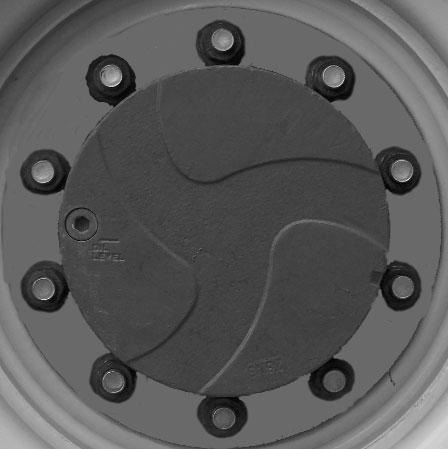
2 minute read
SAFETY
NEVER allow any riders on this machine. This is strictly a single-seat, NO-passenger machine. NEVER use as a lift for personnel unless the machine is equipped with the Personnel Work Platform (PWP) System.
When road travel is required, know and use the signaling devices on the machine. Provide an escort and Slow-Moving Vehicle (SMV) emblem when required.
If necessary to park on a slope, park across the slope and block the tires.
Servicing Safety Reminders
ALWAYS be aware of and avoid pinch point areas on the machine, such as wheels-to-frame, cylinders-to-frame, boom-attachment-tool-to-frame.
NEVER attempt to by-pass the keyswitch to start the engine. ONLYuse the jump-starting procedure detailed in the Service and Storage chapter.
NEVER use your hands to search for hydraulic fluid leaks. Instead use a piece of paper or cardboard. Escaping fluid under pressure can be invisible and can penetrate the skin, causing serious injury. If any fluid is injected into your skin, see a doctor at once. Injected fluid MUSTbe surgically removed by a doctor familiar with this type of injury or gangrene may result.
ALWAYS wear safety glasses with side shields when striking metal against metal. In addition, it is recommended that a softer (chip-resistant) material be used to cushion the blow. Failure to heed could lead to serious injury to the eyes or other parts of the body.
DO NOTrefill the fuel tank when the engine is hot. Allow engine to cool down before refilling to prevent hot engine parts from igniting the fuel if it should spill or splash.
DO NOTsmoke while filling the fuel tank, while working on the fuel or hydraulic systems, or while working around the battery.
DO NOTfill the fuel tank completely. Allow room for expansion. Maintain control of the fuel filler nozzle when filling the tank. Use the correct fuel grade for the operating season.
NEVER use fuel for cleaning purposes.
DO NOTremove the radiator cap after the engine has reached operating temperature or if it is overheated. At operating temperatures, the engine coolant will be extremely hot and under pressure. ALWAYS wait for the engine to cool before attempting to relieve pressure and remove the radiator cap. Failure to heed this warning could result in severe burns.
DO NOTloosen or disconnect any hydraulic lines, hoses or fittings without first relieving hydraulic circuit pressure. Also, be careful not to touch any hydraulic components that have been in recent operation, because they can be extremely hot and can burn you!
Avoid lubrication or mechanical adjustments with the machine in motion or the engine operating. If the engine must be running to make certain adjustments, place the transmission in neutral, apply the parking brake, place the equipment in a safe position, securely block the tires and use extreme caution.
To ensure continued safe operation, replace damaged or worn-out parts with genuine Gehl service parts before using this equipment.
Modifications, Nameplates, Markings and Capacities
Modifications and additions that affect capacity or safe operation shall not be performed without the manufacturer’s prior written approval. Where such authorization is granted, any applicable markings are to be changed accordingly.
All attachment tools MUSTbe marked to identify the attachment tool and the total capacity with the attachment tool at maximum elevation with the load laterally centered.








